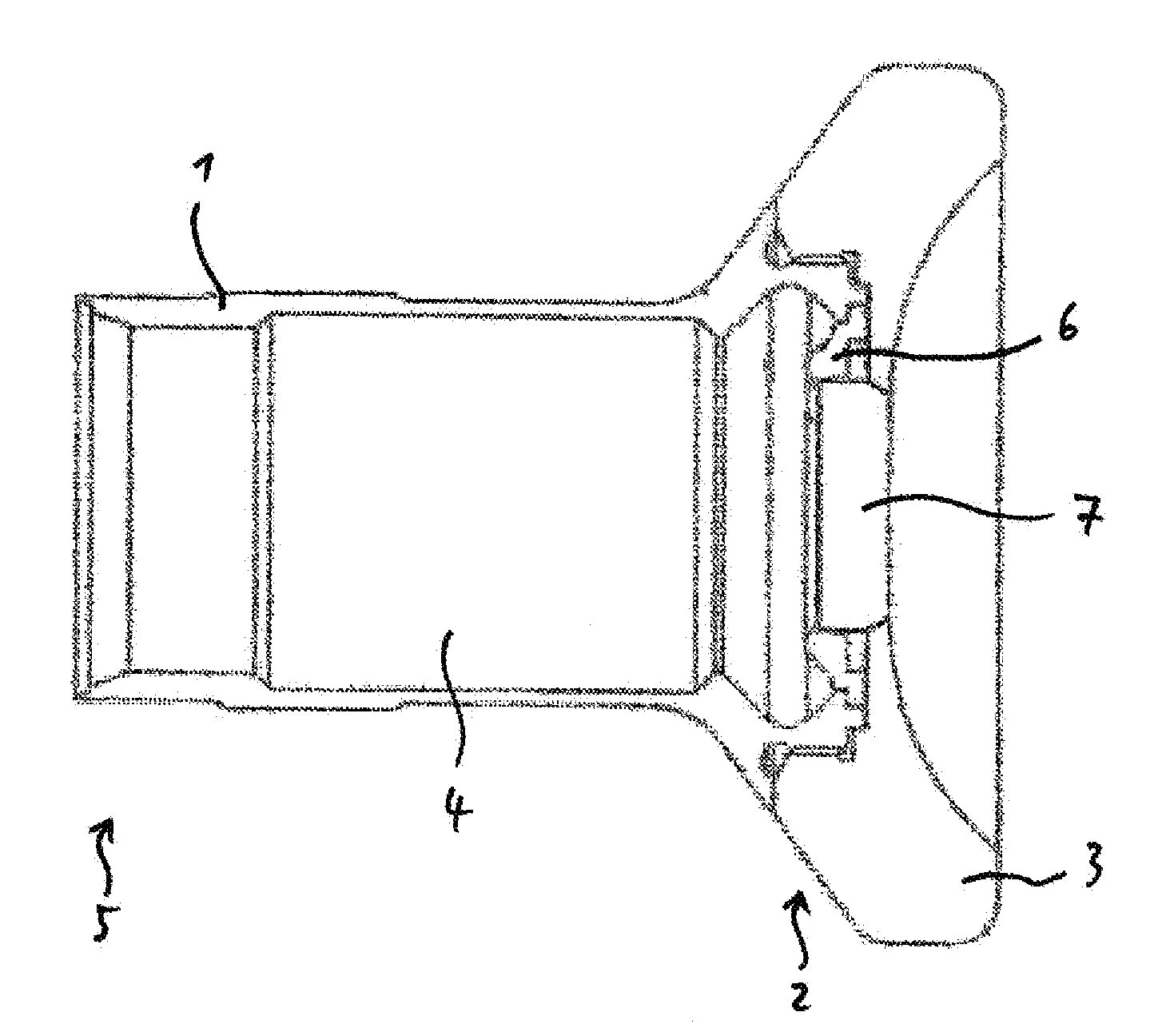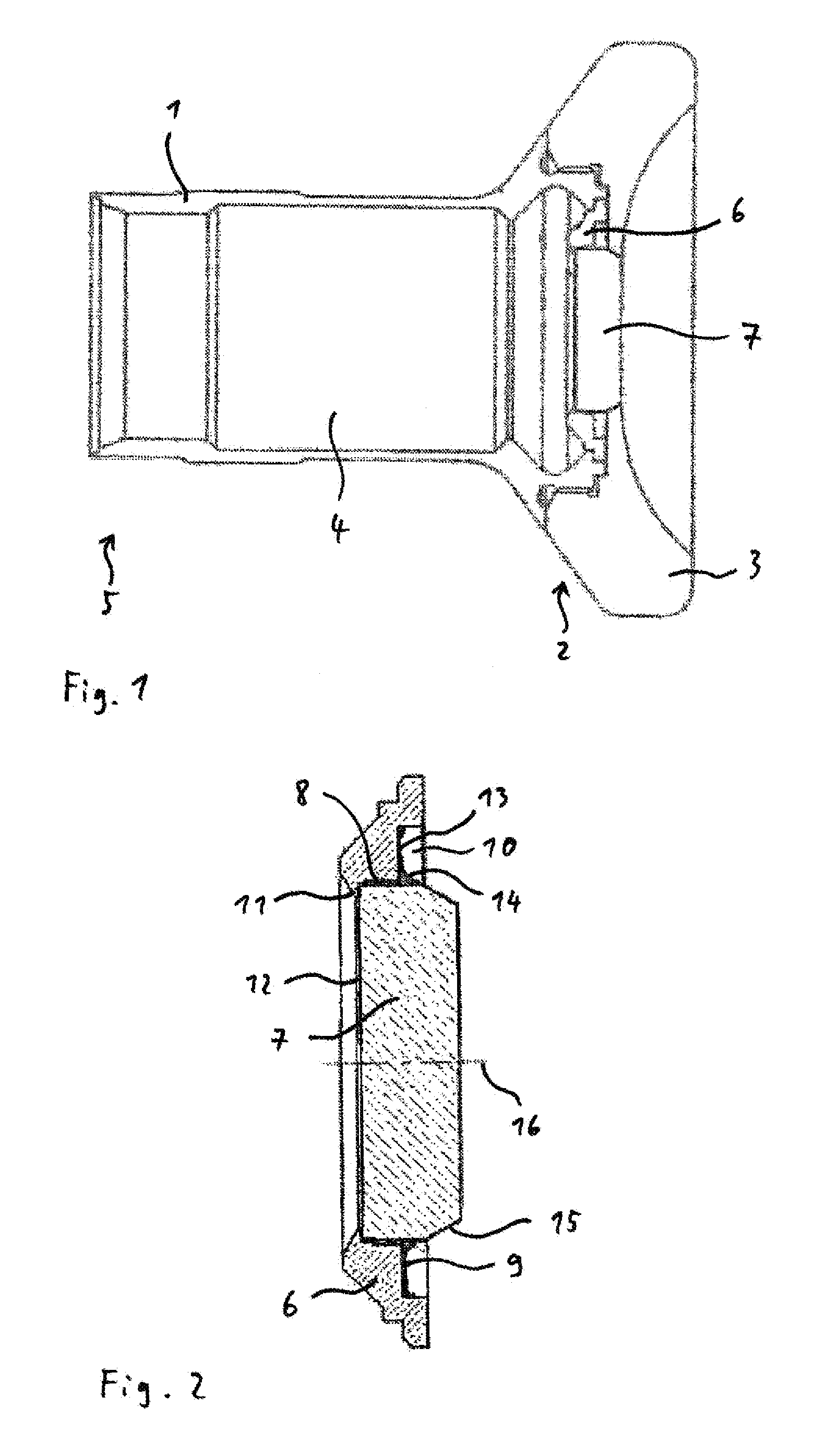Method for assembling a cover glass in an endoscope and endoscope
- Summary
- Abstract
- Description
- Claims
- Application Information
AI Technical Summary
Benefits of technology
Problems solved by technology
Method used
Image
Examples
Embodiment Construction
[0029]According to FIG. 1, the proximal end portion of an endoscope includes an eyecup sheath 1, on whose proximal end 2 an eyecup 3 is screwed. The eyecup can be made of synthetic material, for example polyether ether ketone (PEEK), and in addition can be connected by cementing with the eyecup sheath 1. The eyecup sheath comprises an interior 4, which contains a proximal end portion of the optical system of the endoscope, which can include lenses or other optical elements, which can be enclosed in an interior tube (not illustrated). The eyecup sheath 1 converts at its distal end 5 into an outer tube that encloses the optical system or is connected with it (not illustrated); the outer tube can form the endoscope shaft. In particular, the eyecup sheath 1 is connected in vapor-proof manner with the outer tube. A possibly present inner tube, in addition, can be of vapor-proof configuration. The eyecup sheath 1 is usually a few centimeters in length, for example about 3 cm, with a typic...
PUM
| Property | Measurement | Unit |
|---|---|---|
| Fraction | aaaaa | aaaaa |
Abstract
Description
Claims
Application Information
 Login to View More
Login to View More - R&D
- Intellectual Property
- Life Sciences
- Materials
- Tech Scout
- Unparalleled Data Quality
- Higher Quality Content
- 60% Fewer Hallucinations
Browse by: Latest US Patents, China's latest patents, Technical Efficacy Thesaurus, Application Domain, Technology Topic, Popular Technical Reports.
© 2025 PatSnap. All rights reserved.Legal|Privacy policy|Modern Slavery Act Transparency Statement|Sitemap|About US| Contact US: help@patsnap.com


